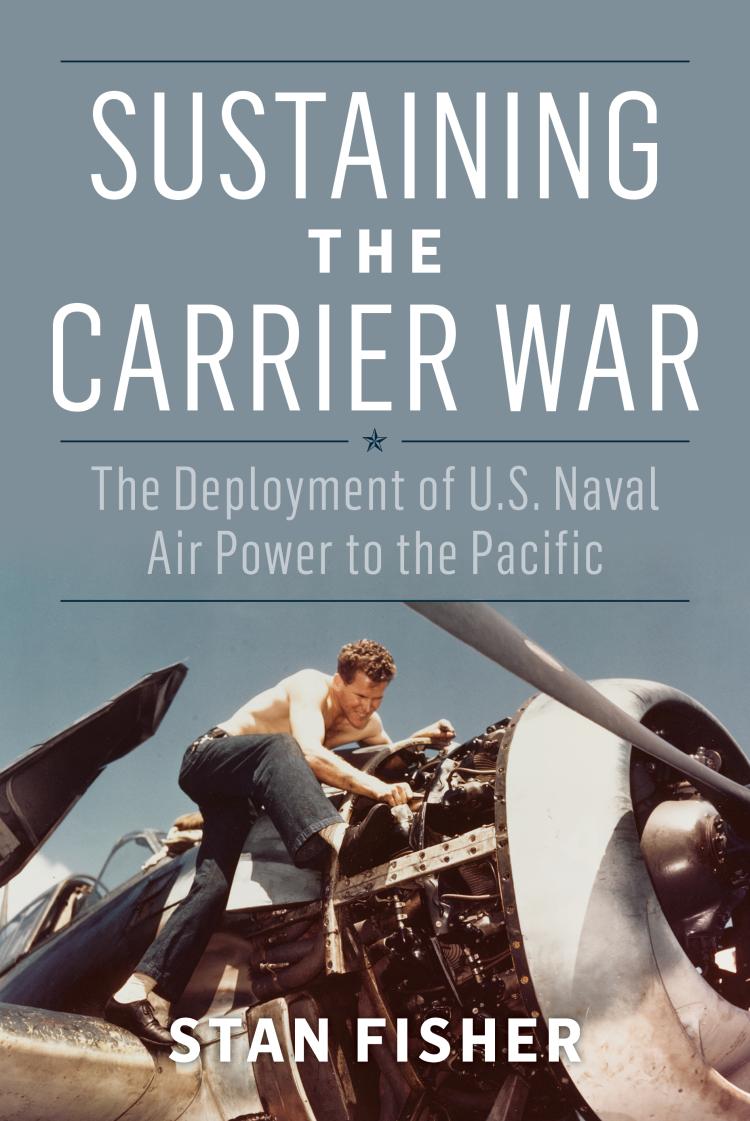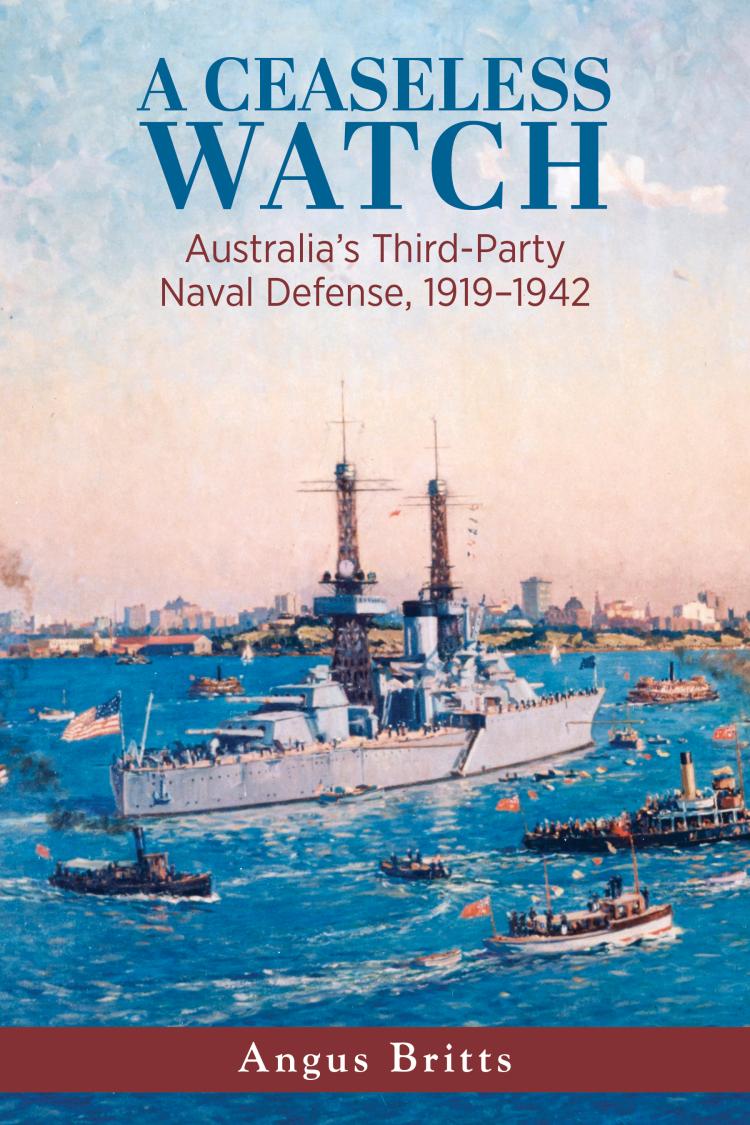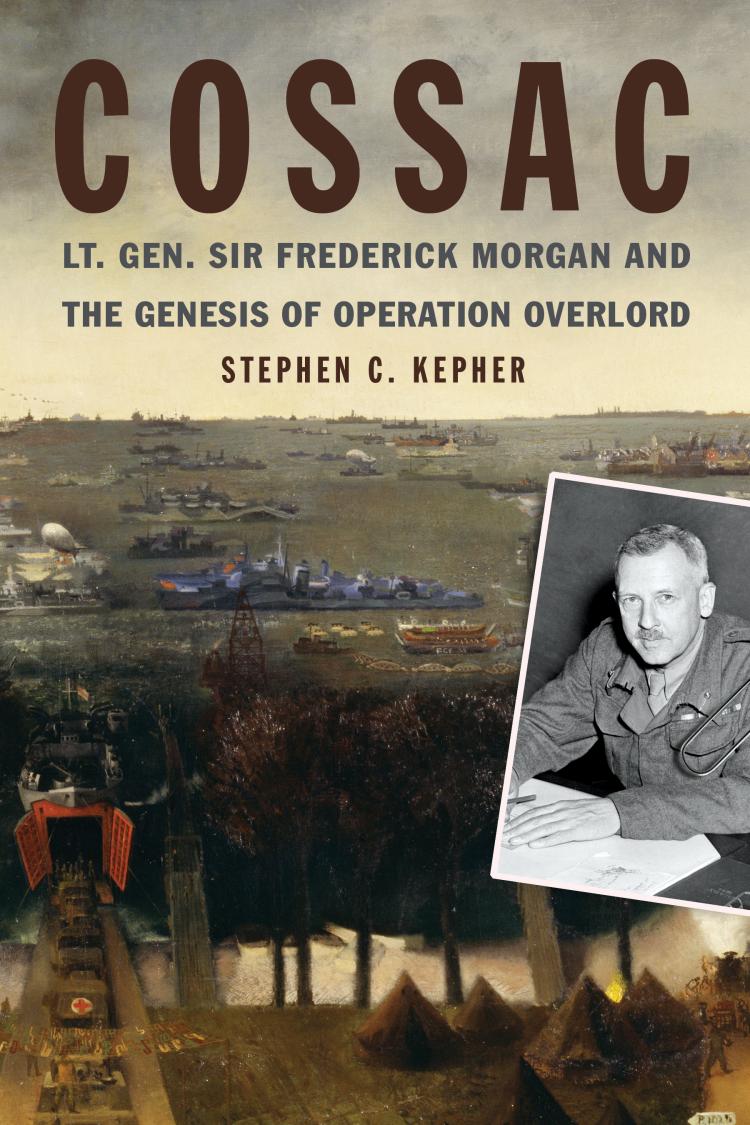Sustaining the Carrier War
- Subject: Spring 2023 Catalog | World War II | General Military & Naval History | Society of Military History Conference
- Format:
Hardcover
- Pages:
288pages
- Illustrations:
22 b/w photos; 20 tables; 7 figures
- Published:
March 15, 2023
- ISBN-10:
1682478475
- ISBN-13:
9781682478479
- Product Dimensions:
9 × 6 × 1 in
- Product Weight:
19 oz
Overview
Winner of the 2023 John R. Lyman Award in Maritime History, North American Naval History
The ability of the United States Navy to fight and win a protracted war in the Pacific was not solely the result of technology, tactics, or leadership. Naval aviation maintenance played a major role in the U.S. victory over Japan in the second World War. The naval war against Japan did not achieve sustained success until enough aircraft technicians were available to support the high tempo of aviation operations that fast carrier task force doctrine demanded. When the United States realized war was imminent and ordered a drastic increase in the size of its aviation fleet, the Navy was forced to reconsider its earlier practices and develop new policies in maintenance, supply, and technical training. Not only did a shortage of technicians plague the Navy, but the scarcity of aviation supply and repair facilities in the Pacific soon caused panic in Washington. While the surface navy’s modernization of at-sea replenishment was beneficial, it did not solve the problems of sustaining war-time aircraft readiness levels sufficient to a winning a naval air war.
Fisher outlines the drastic institutional changes that accompanied an increase in aviation maintenance personnel from fewer than 10,000 to nearly 250,000 bluejackets, the complete restructuring of the naval aviation technical educational system, and the development of a highly skilled labor force. The first comprehensive study on the importance of aircraft maintenance and the aircraft technician in the age of the aircraft carrier, Sustaining the Carrier War, provides the missing link to our understanding of Great Power conflict at sea.
About the Author
Editorial Reviews
"Delving deeply into unpublished unit and command histories from World War II, Dr. Fisher’s book shines a light on the under-studied and under-appreciated role of the enlisted maintainer in supporting the immense aerial armada that played such a large role in the victory over Japan." —Laurence M. Burke II, author of At the Dawn of Airpower: The U.S. Army, Navy, and Marine Corps’ Approach to the Airplane, 1907–1917
“Finally! Stan Fisher fills an eight decade historiographical void with an illuminating narrative on how the Navy made critical institutional and cultural changes to build a gargantuan naval aircraft maintenance and repair infrastructure integral to naval aviation operations in all World War II naval theaters. The types of challenges Fisher addresses have contemporary counterparts that make this book not only a candidate for the CNO’s reading list but of the Harvard Business School as well!” –David F. Winkler, staff historian, Naval Historical Foundation
“At the Battle of Midway, the great majority of Japanese pilots actually survived, but almost all the highly trained and skilled aircraft maintainers died, with profound negative strategic consequences. This book masterfully shows how the U.S. Navy overcame a myriad of problems to belatedly create the critical aircraft maintenance capability vital for victory." —Rear Admiral Sam Cox, U.S. Navy (Ret.) - Naval Historian and former Commander of the Office of Naval Intelligence.
“Much has been written about American carriers in WWII, but practically nothing has been produced regarding how that carrier aviation force was kept in the fight. In this unique volume, Fisher “looks under the hood” to see how the USN adapted during the war years to produce the necessary aviation techs to support the world’s mightiest carrier force.” —Jonathan Parshall, co-author, Shattered Sword, the Untold Story of the Battle of Midway
"...eye-opening reading and is of value not only for historians—professional or amateur—of the Great Pacific War, but also instructive for the modern U.S. Navy, which has exhibited a dangerous tendency to forget about its own history. Just as the Navy of the 1930s was overly focused on technology and tactics at the expense of mundane maintenance and supply considerations, so too is today’s Navy too often blinded by the bells and whistles of fancy tech. If the carrier fleet must once again sail into harm’s way, the ability to provide sustainable air power at sea might well make the difference between winning a longer conflict and losing a shorter one." —Strategy Page
"Sustaining the Carrier War began as the author’s PhD dissertation, so it is deeply researched. Any reader who wants a more complete picture of how the U.S. Navy prevailed in its bloody war against Japan in the Pacific during World War II will definitely want to add this book to his or her military library." —The Journal of America’s Military Past
"Sustaining the Carrier War: The Deployment of U.S. Naval Air Power to the Pacific is the first comprehensive study on the importance of aircraft maintenance and the aircraft technician in the age of the aircraft carrier, Sustaining the Carrier War, provides the missing link to our understanding of Great Power conflict at sea. Exceptionally well written, organized and presented. Sustaining the Carrier War is informative, enhanced for the reader with the inclusion of numerous illustrations, twenty-two pages of Notes, a four page Bibliography, and a seventeen page Index. A comprehensively researched, detailed, and meticulous work of seminal scholarship, Sustaining the Carrier War is a primary and unreservedly recommended addition to personal, professional, community, college, and university library World War II American Naval Military History and Strategy collections." —Midwest Book Review
"Stan Fisher is a professor of Naval and American history at the US Naval Academy, Annapolis. He has a PhD from Maryland University and is a past recipient of the Samuel Eliot Morison Naval History Scholarship. Before earning these qualifications he gained a commission in the USN as a pilot through the Reserve Officer Training Corps and flew Seahawk helicopters, accumulating over 2,500 flying hours in his log book before retiring with the rank of commander. He qualified as a test pilot, weapons and tactics instructor in addition to an appointment as a squadron maintenance officer. Sustaining the Carrier War is the latest in a series of edited books entitled Studies in Naval History and Sea Power published by the US Naval Institute which examines a range of international naval topics. The subject matter of this book is important and it deserves its place in the series of studies."—Australian Naval Institute
"Sustaining the Carrier War is not a book for the casual reader. There are no dramatic tales of split-second decisions or air combat against determined foes in its pages, but rather a deeply researched and well-written analysis of how the US Navy’s small pre-war aircraft carrier force was transformed into the greatest combat fleet in history. As an historian Stan Fisher has accomplished a rare feat by telling the untold story of the central role of the aircraft technicians along with the shore infrastructure that supported them in sustaining the American carrier forces that led the way to victory over Japan in the Pacific."—Sea History









